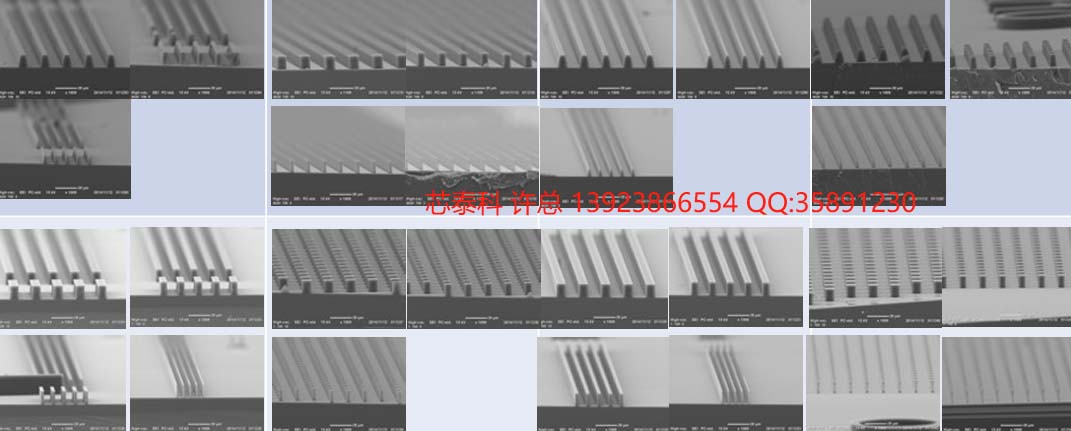NEGATIVE RESIST NR21-20000P
Description
? Negative Resist NR21-20000P is a negative tone photoresist designed for thick film
applications is compatible with UV exposure tools emitting at the 365 nm
wavelength, including wafer steppers, scanning projection aligners, proximity printers
contact printers.
? The following are advantages of NR21-20000P over other resists: - superior resolution capability - fast development time - superb adhesion in plating - easy resist removal using Resist Remover RR41
? The formulation processing of NR21-20000P were designed with regard to
occupational environmental safety. The principal solvent in NR21-20000P is
gammabutyrolactone development of NR21-20000P is accomplished in basic water
solution.
Properties
? Solids content (%) 50-56
? Principal solvent gammabutyrolactone
? Appearance light yellow liquid
? Coating characteristic uniform, striation free
? Film thickness:
Softbake Softbake Post-Exposure
Coating Coating Hotplate Hotplate Hotplate Film
Spin Speed Time Bake Time Bake Time Bake Time Thickness
(rpm) (s) (s) 80°C (s) 150°C (s) 80°C (nm)
1050 10 600 300 600 115000-125000
1200 10 600 300 600 95000-105000
1500 10 - 180 300 48000-52000
3150 10 - 180 300 38000-42000
3000 40 - 120 300 18000-22000
? Sensitivity at 365 nm exposure wavelength (mJ/cm2 for 1 μm thick film): 46
? Guaranteed shelf life at 5°C storage (years): 1
Processing
1. Application of resist by spin coating at a ed spin speed for a time designated in
film thickness vs. spin speed on page 1.
2. Softbake procedure is determined by film thickness. Please refer to bake instructions
on page 1.
3. Resist exposure in a tool emitting 365 nm wavelength. Please determine 365 nm
exposure light intensity (mW/cm2) with a proper gauge. Multiply resist thickness (μm) by
46 mJ/cm2 to obtain exposure dose. Divide exposure dose (mJ/cm2) by light intensity
(mW/cm2) at 365 nm wavelength to obtain exposure time (s).
4. Post-exposure bake on hotplate at 80°C for a time depending on a film thickness.
Please refer to bake instructions on page 1.
5. Resist development in Resist Developer RD6 by spray or immersion at 20-25 °C.
Please ensure that there is no exposed resist thickness loss during development.
Exposed resist thickness loss during development would indicate improper exposure
energy /or bake conditions.
6. Resist rinse in deionized water until water resistivity reaches prescribed limit.
7. Drying of resist.
8. Removal of resist in Resist Remover RR41.
The above procedure refers to substrates that are good
conductors of heat such as
silicon, GaAs, InP, etc. Hotplate temperatures need to be adjusted such that surface
temperature of substrates that are poor
conductors of heat reach designated
temperatures for softbake post-exposure bake. Always use external thermocouples
when measuring surface temperatures.
Patterned images of 70 μm thick Negative Resist NR21-20000P.
Exposure Tool: MA 200 SUSSMicroTec with 100 μm proximity gap.
Hling Precautions
Negative Resist NR21-20000P is a flammable liquid. Hle it with care. Keep it away
heat, sparks flames. Use adequate ventilation. It may be harmful if swallowed
or touched. Avoid contact with liquid, vapor or spray mist. Wear chemical goggles, rubber
gloves protective coating.


